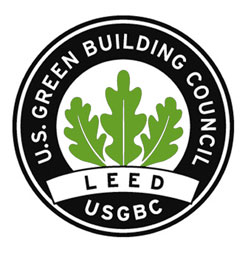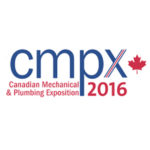 The most recent versions of LEED Certification standards have placed even more emphasis on energy efficiency. HVAC is integral to LEED certification as it affects several of the scoring categories. These scoring categories basically decide how “green” a building is.
The most recent versions of LEED Certification standards have placed even more emphasis on energy efficiency. HVAC is integral to LEED certification as it affects several of the scoring categories. These scoring categories basically decide how “green” a building is.
LEED stands for Leadership in Energy and Environmental Design. It’s a set of standards that encourages buildings to be environmentally friendly. All aspects of a building’s design, construction, operation and maintenance – including HVAC – are taken into account and are certified at different levels.
First developed by the U.S. Green Building Council (USGBC), a non-profit organization created in 1993, it’s now an internationally recognized green building certification program. Over the years it expanded and evolved from a single pilot program to Version 3, also known as LEED 2009 and now LEEDv4, which was introduced in November 2013.
According to the USGBC website:
LEED is the most widely used green building rating system in the world with 1.85 million square feet of construction space certifying every day. LEED certification provides independent verification of a building or neighborhood’s green features, allowing for the design, construction, operations and maintenance of resource-efficient, high-performing, healthy, cost-effective buildings.
Some of the goals of LEED certification are:
- Reduce waste and use less energy during construction
- Use as much recycled material as possible
- Consume less energy and use less water
- Lower operational costs
- Less maintenance and with it less maintenance costs
- Better indoor air quality
- A better living and working environment for building occupants
How do these goals relate to HVAC installs? HVAC equipment should have the ENERGY STAR label. The higher the rating is, the more energy efficient the system. High efficiency HVAC units not only save money on energy bills but also require less maintenance, which all helps the environment by wasting fewer resources.
Levels of LEED Certification
For buildings to achieve LEED certification they are assigned up to 100 points based on the following criteria: Location and Transportation, Material and Resources, Water Efficiency, Energy and Atmosphere, Indoor Environmental Quality and Sustainable Sites. There are also bonus points for Regional Priority and Innovation.
The total number of points achieved by a project determines what certification level it will be assigned:
- Certified: 40 – 49 points
- Silver: 50 – 59 points
- Gold: 60 – 79 points
- Platinum: 80+ points
HVAC Systems in LEED buildings
Most LEED certified projects use high efficiency condensing boilers and high efficiency cooling systems with variable speed drives, economizer cycles, CO2 monitors and occupancy sensors.
For the higher end certifications of gold and platinum new technologies are being developed such as using solar energy for space heating and water heating. Geothermal energy can also be used for direct radiant cooling and heating or for ground source heat pumps.
One example of this is the University of Toronto’s new Environmental Sciences and Chemistry Building. This uses six giant tubes, 80 to 90 feet in length, which draw fresh air underground before piping it indoors and help the building achieve LEED Gold status.
Other technologies reduce power consumption at peak periods such as Cool Roofs that reduce the load on air conditioning. Also thermal storage systems can use power at night to chill water that is used for cooling later in the day.
Finally, natural ventilation can be maximized using smart window systems and exterior vents alongside displacement ventilation or DV which uses air supply diffusers at floor level to distribute air at ceiling height.
Additional information
Although the LEED standards are developed by the USGBC the programs are actually administered by the Green Business Certification Inc., or GBCI.
LEED Categories
There are ten rating systems grouped into five categories:
Building Design and Construction
This applies to buildings that are newly constructed or undergoing major renovations.
Interior Design and Construction
This category is for tenants that lease a portion of a building
Building Operations & Maintenance
This applies to existing buildings to measure their current operations and maintenance and potentially improve them.
Applies to new developments or redevelopment projects.
This applies to single family homes and multi-family homes up to eight stories in height.



